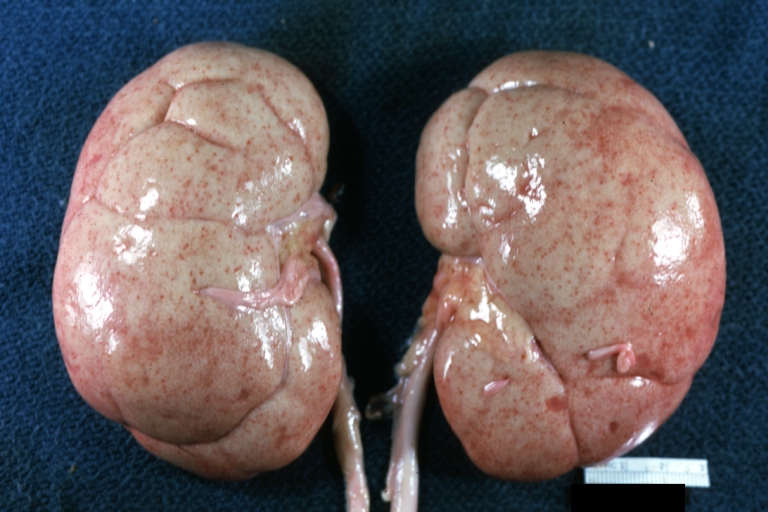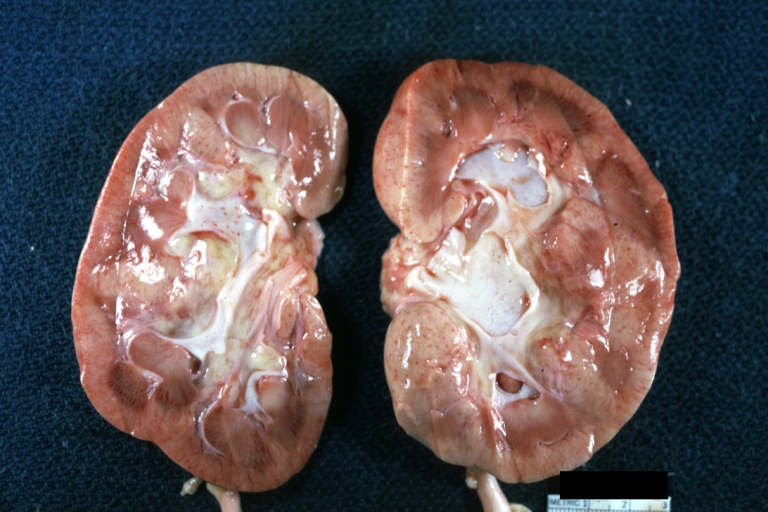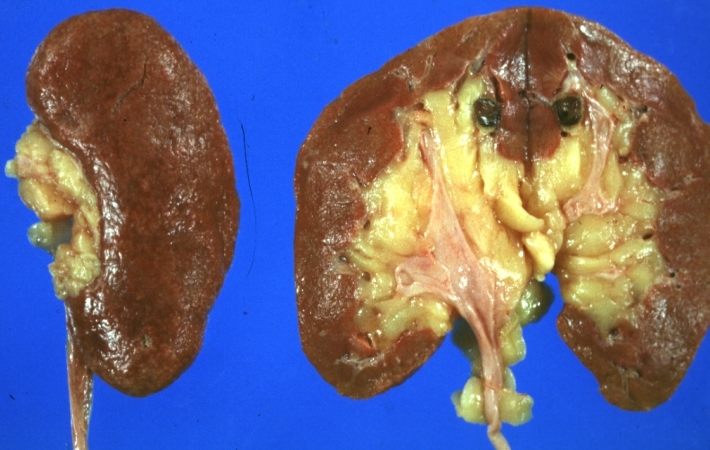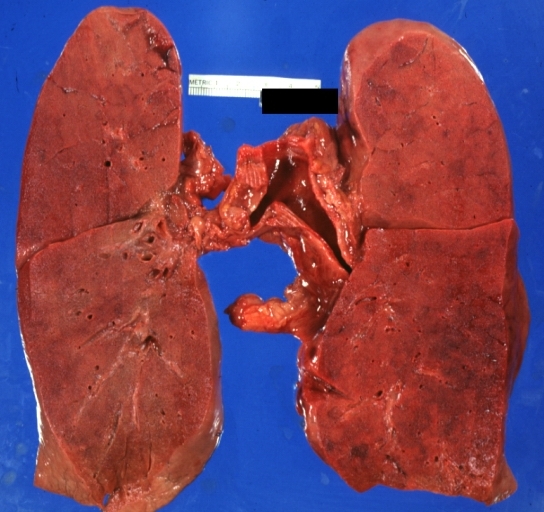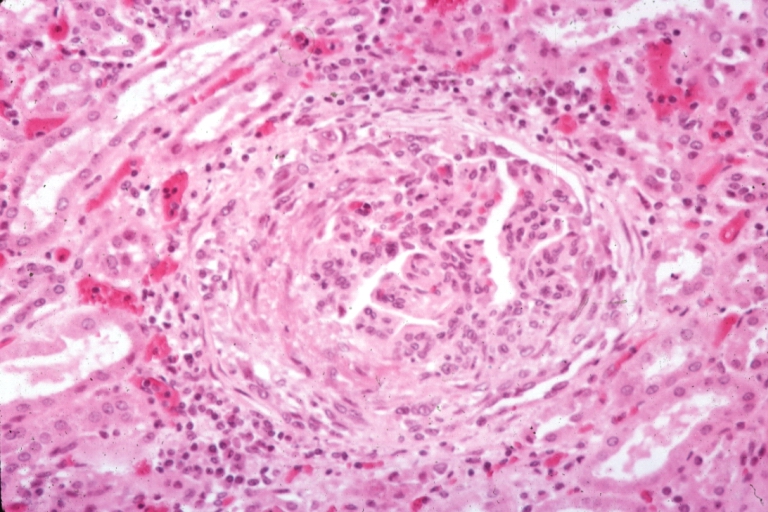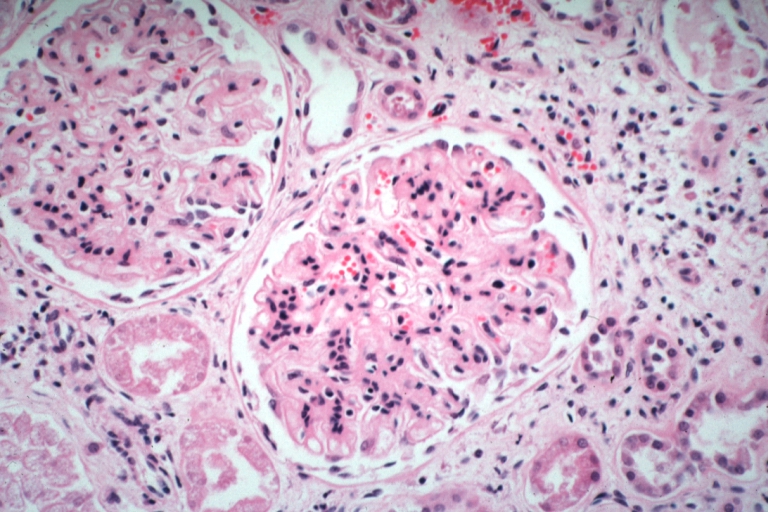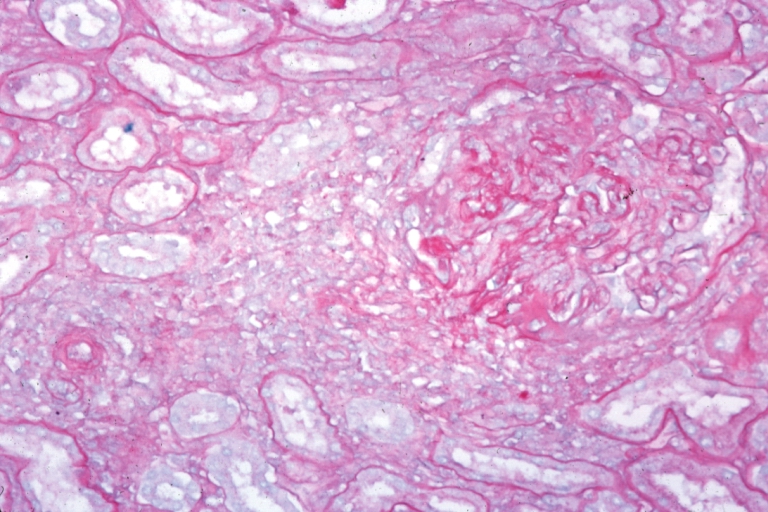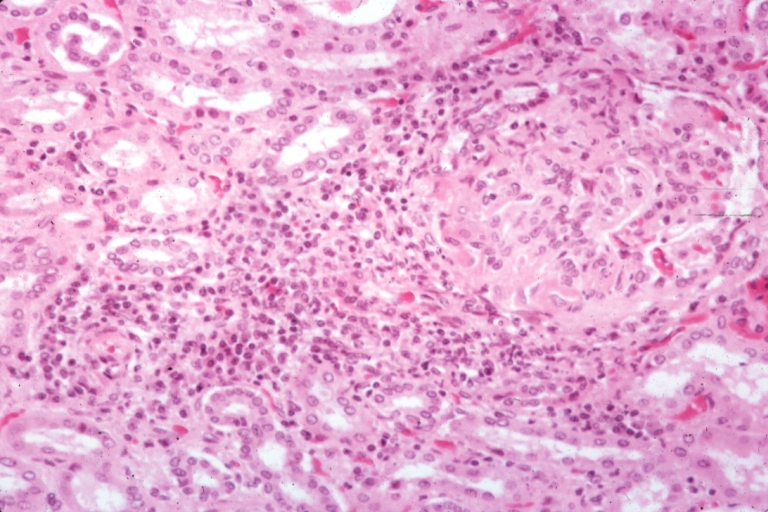Lupus nephritis pathophysiology: Difference between revisions
No edit summary |
|||
| Line 1: | Line 1: | ||
{|class="infobox" style="position: fixed; top: 65%; right: 10px; margin: 0 0 0 0; border: 0; float: right; | {| class="infobox" style="position: fixed; top: 65%; right: 10px; margin: 0 0 0 0; border: 0; float: right;" | ||
|- | |- | ||
| {{#ev:youtube|https://https://www.youtube.com/watch?v=HwzNQ4Oav00&t=4s |350}} | | {{#ev:youtube|https://https://www.youtube.com/watch?v=HwzNQ4Oav00&t=4s |350}} | ||
| Line 45: | Line 45: | ||
===Pathogenesis=== | ===Pathogenesis=== | ||
*It is understood that [disease name] is the result of / is mediated by / is produced by / is caused by either [hypothesis 1], [hypothesis 2], or [hypothesis 3]. | *It is understood that [disease name] is the result of / is mediated by / is produced by / is caused by either [hypothesis 1], [hypothesis 2], or [hypothesis 3]. | ||
*[Pathogen name] is usually transmitted via the [transmission route] route to the human host. | *[Pathogen name] is usually transmitted via the [transmission route] route to the human host. | ||
| Line 63: | Line 62: | ||
==Gross Pathology== | ==Gross Pathology== | ||
*On gross pathology, [feature1], [feature2], and [feature3] are characteristic findings of [disease name]. | *On gross pathology, [feature1], [feature2], and [feature3] are characteristic findings of [disease name]. | ||
{| align=row | {| align="row" | ||
|- | |- | ||
| | | | ||
|-valign="top" | |- valign="top" | ||
| [[Image:Systemic lupus erythematosus 001.jpg|thumb|Gross, enlarged very pale kidneys with flea bite or ectasia. A good example of kidneys from a patient with nephrotic syndrome (subacute glomerulonephritis)]] | | [[Image:Systemic lupus erythematosus 001.jpg|thumb|Gross, enlarged very pale kidneys with flea bite or ectasia. A good example of kidneys from a patient with nephrotic syndrome (subacute glomerulonephritis)]] | ||
| [[Image:Systemic lupus erythematosus 002.jpg|thumb|Gross cut surface pale kidneys typical of nephrotic syndrome (subacute glomerulonephritis)]] | | [[Image:Systemic lupus erythematosus 002.jpg|thumb|Gross cut surface pale kidneys typical of nephrotic syndrome (subacute glomerulonephritis)]] | ||
| Line 75: | Line 74: | ||
==Microscopic Pathology== | ==Microscopic Pathology== | ||
*On microscopic histopathological analysis, [feature1], [feature2], and [feature3] are characteristic findings of [disease name]. | *On microscopic histopathological analysis, [feature1], [feature2], and [feature3] are characteristic findings of [disease name]. | ||
{| align=row | {| align="row" | ||
|- | |- | ||
| | | | ||
|-valign="top" | |- valign="top" | ||
|[[Image:Systemic lupus erythematosus 039.jpg|thumb|Kidney: Lupus Erythematosus: Micro high mag H&E. A nice example of a lesion of chronic glomerulonephritis with lobular scarring. A fibrous type crescent.]] | |[[Image:Systemic lupus erythematosus 039.jpg|thumb|Kidney: Lupus Erythematosus: Micro high mag H&E. A nice example of a lesion of chronic glomerulonephritis with lobular scarring. A fibrous type crescent.]] | ||
|[[Image:Systemic lupus erythematosus 011.jpg|thumb|Kidney: Lupus Erythematosus: Micro high mag H&E two glomeruli showing mesangial thickening and focal wire loop type lesions 19yo female with renal failure and embolic brain disease from Libman Sacks lesion on mitral valve ]] | |[[Image:Systemic lupus erythematosus 011.jpg|thumb|Kidney: Lupus Erythematosus: Micro high mag H&E two glomeruli showing mesangial thickening and focal wire loop type lesions 19yo female with renal failure and embolic brain disease from Libman Sacks lesion on mitral valve ]] | ||
| Line 84: | Line 83: | ||
|[[Image:Systemic lupus erythematosus 036.jpg|thumb|Kidney: Lupus Erythematosus: Micro med mag H&E typical glomerulonephritis lesion]] | |[[Image:Systemic lupus erythematosus 036.jpg|thumb|Kidney: Lupus Erythematosus: Micro med mag H&E typical glomerulonephritis lesion]] | ||
|} | |} | ||
====Videos==== | ====Videos==== | ||
Revision as of 15:56, 12 June 2018
| https://https://www.youtube.com/watch?v=HwzNQ4Oav00&t=4s |350}} |
|
Lupus nephritis Microchapters |
|
Diagnosis |
|---|
|
Treatment |
|
Case Studies |
|
Lupus nephritis pathophysiology On the Web |
|
American Roentgen Ray Society Images of Lupus nephritis pathophysiology |
|
Risk calculators and risk factors for Lupus nephritis pathophysiology |
Editor-In-Chief: C. Michael Gibson, M.S., M.D. [1]; Associate Editor(s)-in-Chief: Cafer Zorkun, M.D., Ph.D. [2], Raviteja Guddeti, M.B.B.S. [3]
Overview
Pathophysiology
Systemic lupus erythematosus (SLE, or lupus) is an autoimmune disease. This means there is a problem with the body's immune system.
Normally, the immune system helps protect the body from harmful substances. But in patients with an autoimmune disease, the immune system cannot tell the difference between harmful substances and healthy ones. As a result, the immune system attacks otherwise healthy cells and tissue.
Overview
The exact pathogenesis of [disease name] is not fully understood.
OR
It is thought that [disease name] is the result of / is mediated by / is produced by / is caused by either [hypothesis 1], [hypothesis 2], or [hypothesis 3].
OR
[Pathogen name] is usually transmitted via the [transmission route] route to the human host.
OR
Following transmission/ingestion, the [pathogen] uses the [entry site] to invade the [cell name] cell.
OR
[Disease or malignancy name] arises from [cell name]s, which are [cell type] cells that are normally involved in [function of cells].
OR
The progression to [disease name] usually involves the [molecular pathway].
OR
The pathophysiology of [disease/malignancy] depends on the histological subtype.
Pathophysiology
Pathogenesis
- It is understood that [disease name] is the result of / is mediated by / is produced by / is caused by either [hypothesis 1], [hypothesis 2], or [hypothesis 3].
- [Pathogen name] is usually transmitted via the [transmission route] route to the human host.
- Following transmission/ingestion, the [pathogen] uses the [entry site] to invade the [cell name] cell.
- [Disease or malignancy name] arises from [cell name]s, which are [cell type] cells that are normally involved in [function of cells].
- The progression to [disease name] usually involves the [molecular pathway].
- The pathophysiology of [disease/malignancy] depends on the histological subtype.
Genetics
- [Disease name] is transmitted in [mode of genetic transmission] pattern.
- Genes involved in the pathogenesis of [disease name] include [gene1], [gene2], and [gene3].
- The development of [disease name] is the result of multiple genetic mutations.
Associated Conditions
Gross Pathology
- On gross pathology, [feature1], [feature2], and [feature3] are characteristic findings of [disease name].
Microscopic Pathology
- On microscopic histopathological analysis, [feature1], [feature2], and [feature3] are characteristic findings of [disease name].
Videos
{{#ev:youtube|Tw07BFaDEo0}}
References
